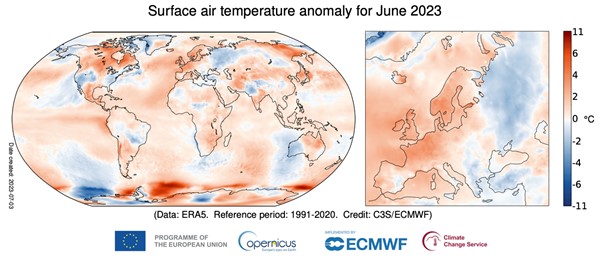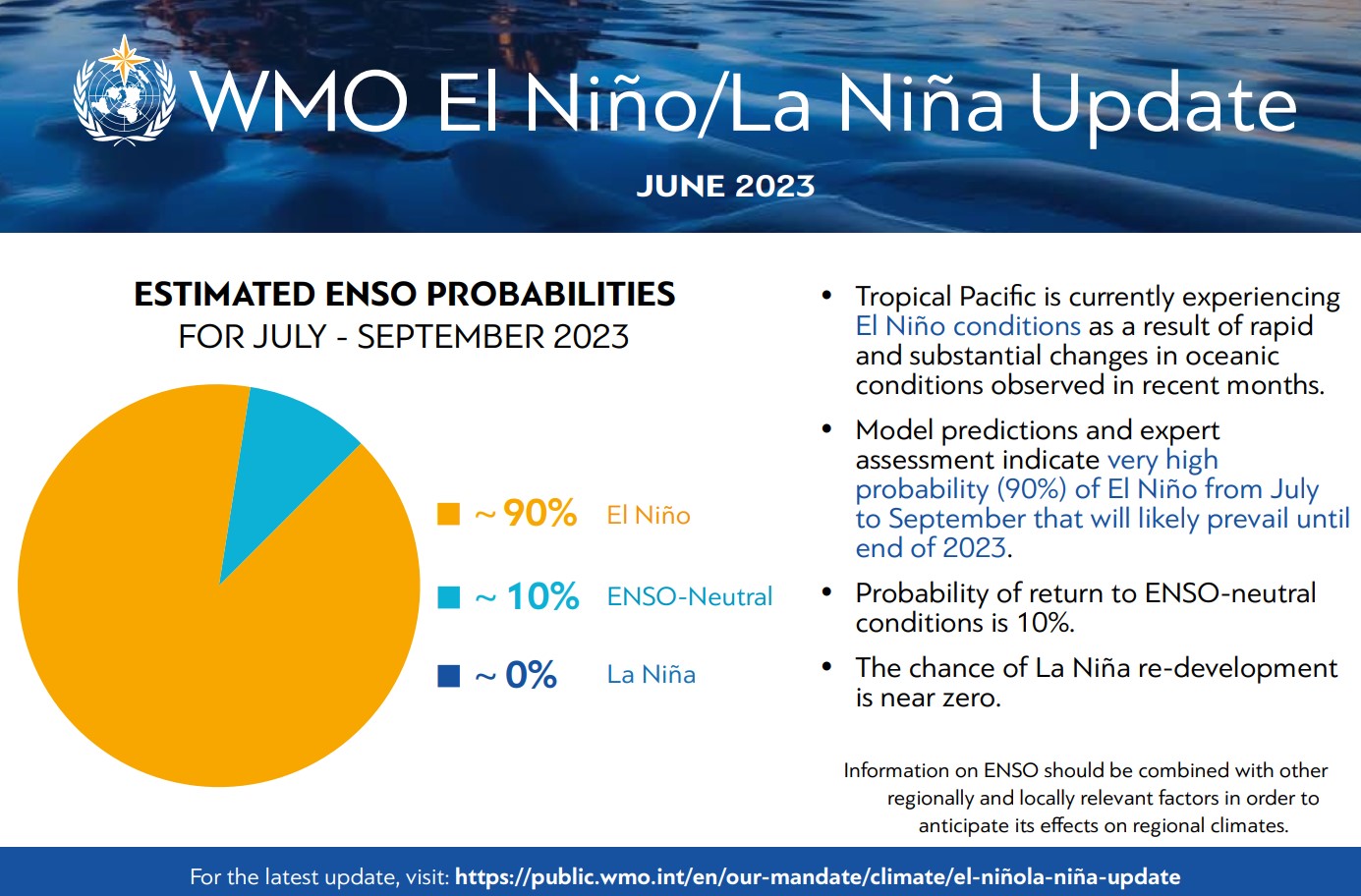

World’s hottest week on record follows the UK’s hottest June
by Kirsty McCabe, FRMetS
Abnormal, extreme and unprecedented. Just three words that describe the high temperatures of summer 2023, and the presence of El Niño means more dangerous levels of heat to come.
June 2023 has been confirmed as the hottest June on record for the UK, beating the previous record by nearly a degree. The average mean temperature of 15.8°C is the highest in a series since 1884, with all four home nations reporting their warmest June on record.

Attribution studies by Met Office scientists found that the chance of beating the previous record of 14.9°C has doubled since the 1940s. What’s more, this could happen every other year by the middle of the 21st century.
Settled conditions thanks to high pressure allowed temperatures in the UK to climb, both by day and by night, peaking at 32.3°C. Temperatures even reached 30.8°C on 13 June, which until this year had been the only date in June not to exceed the 30-degree mark in the UK.

Record June temperatures were also experienced across northwest Europe, while parts of Canada, the United States, Mexico, Asia and eastern Australia were significantly warmer than normal. But June wasn’t the hottest everywhere, with western Australia, western parts of the United States and western Russia cooler than normal.

While a thundery breakdown at the end of June meant temperatures in the UK cooled off for the start of July 2023, the same cannot be said globally as the world experienced its hottest week on record (the first week of July 2023). According to the World Meteorological Organization, at least three datasets indicated that preliminary temperature records had been broken, with the world recording its hottest day ever on 7 July 2023, with a global average temperature of 17.24°C. The previous record of 16.92°C was set in August 2016, the last time El Niño was present.

Global sea surface temperatures have also caused concern, reaching a record high for the time of year in April, May and June 2023, in a series stretching back to 1850. With the eastern tropical Pacific expected to warm further because of El Niño, records will continue to fall.
One of the most severe marine heatwaves on Earth has developed off the coast of Ireland and the UK, with water temperatures as high as 4-5°C above normal.
— Colin McCarthy (@US_Stormwatch) June 17, 2023
NOAA's Marine Heatwave Watch has categorized this event as a Category 4 (extreme) marine heatwave. pic.twitter.com/mDfhZEu2KY
Coastal waters around the UK have been unusually warm as well, with record-breaking sea surface temperatures in May and June 2023, and a severe marine heatwave in the North Atlantic was declared by NOAA mid-June. The Met Office says it is likely the warmer waters played a role in raising the temperatures over land.

But what is driving this record-breaking heat and what are the consequences? In short, it’s a combination of natural climate variation from global weather patterns, with an unwelcome boost due to human-induced climate change. Already, there are concerns that the warmer waters could aid the development of Atlantic tropical storms.
The effect of higher global temperatures is felt all the way to the poles, with well below average levels of Arctic sea ice and exceptionally low levels of Antarctic sea ice.

A heat dome across southern Europe in July 2023 led to fierce heatwave conditions and fears that temperatures in Italy could get close to breaking the European record of 48.8°C. Meanwhile in the southwest United States, the National Weather Service warned of the possibility of reaching a dangerous 49°C (120°F) in the lower deserts.
As well as heatwaves, higher temperatures are linked to larger wildfires, erratic and intense rainfall events, and stronger cyclones.

The return of the El Niño climate pattern means the world is likely to break even more weather and temperature records this year. Not great news, especially when a recent study in Nature Medicine has linked the extreme heat of summer 2022 to more than 61,000 heat-related deaths across Europe.




